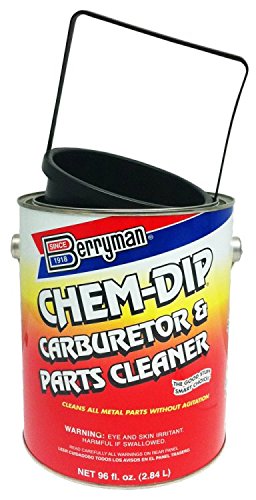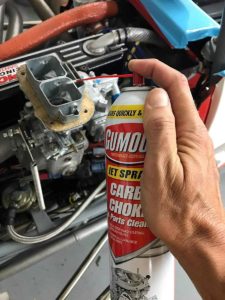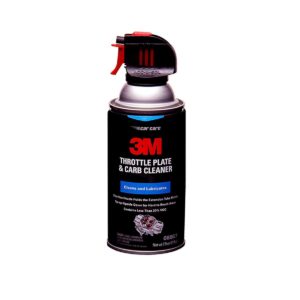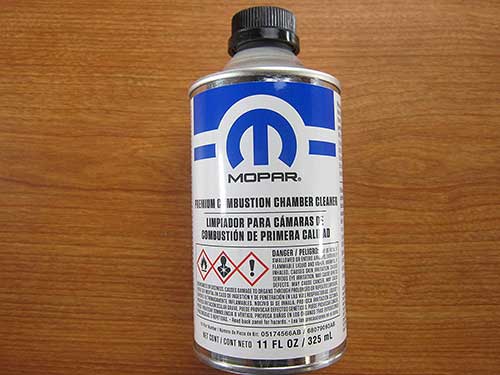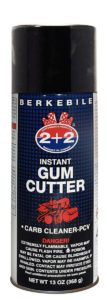Up until the 1980s, the majority of internal combustion engines depend on the carburetor for the proper mixing of their fuel and air. Now, vehicles use fuel injection. Carburetors are an essential part of any vehicle. For a successful combustion process, the carburetor ensures that the right amount of fuel gets into the engine every time.
How to clean snow blower carburetor? Well, there are a lot of techniques and products available to clean the carburetor of a snowblower. For example, Gumout Jet Spray Carburetor, Berkebile 2+2 carburetor cleaner, and Aerosol spray can be used efficiently. These products remove the dirt from the snowblower carburetor and hence, increase its efficiency.
Want to know more? Just go through the article and you’ll understand better!
With time, carburetors tend to build up dirt in them. If they are not properly cleaned at the right time, it may prevent the proper amount of fuel from getting into the engine. This can massively decrease the performance of your car or a snow blower machine. It can also cause the engine to die in the middle of running. In this article, we will show you how to clean a snowblower carburetor without removing it.
Table of Contents
What Actually Snow Blower Is?
This is a machine used for removing snow from a region where it is not wanted, such as a sidewalk, roadway, driveway, or railroad track. It uses a spinning auger to push snow into the discharge chute. The discharge chute then throws the snow to the side and out of the way. The snowblower has a special type of carburetor which is the most important part of this amazing machine. It is distinctively designed and can work for a long time if maintained properly.
How To Clean Snow Blower Carburetor without Removing It
Winter is here and snow blowers are out in full force. But did you know that if you don’t take care of your snow blower’s carburetor, it can start to clog up with dirt and debris? If not taken care of properly, this can lead to your snow blower not working as well as it should or even breaking down completely. Don’t worry – cleaning a snow blower’s carburetor without removing it is possible!
Here, we’ll show you step-by-step how to get rid of the grime and restore your snow blower’s performance. Read on to learn more about how easy it is to clean a snow blower carburetor without taking it apart!
#Step-1: Turn off The Snowblower
Turn off the snowblower and let it cool down. Before attempting any maintenance, it’s important to make sure that the engine is off and cooled down. This will ensure that you keep yourself safe from any potential damage.
#Step-2: Detach The Carburetor Bowl
Step 2: Detach the carburetor bowl. Once you locate the carburetor, remove the fuel jet for easier access to the bowl. If this is your first time doing this task, consult your owner’s manual for more information about all of its components and how they fit together. Inside the bowl, you may find dirt, liquid, or concentrated fuel; so grab a wiping cloth, copper wire, and some carburetor cleaner to get started.
#Step-3: Clean The Carburetor Bowl and Fuel Jet
Step 3: Clean the carburetor bowl and fuel jet. Spray some of your chosen cleaners onto the bowl’s surface before wiping away any debris or residue with a cloth. Afterward, take up the fuel jet and repeat this same process – spraying cleaner into all of its holes and scrubbing them out using copper wire to avoid scratching any brass surfaces or altering precision holes. When finished, do one final test spray to check if droplets come out cleanly from all tiny holes – a sign that it is no longer clogged!
#Step-4: Move to The Emulsion Tube Area
Step 4: Move to the emulsion tube area. Set aside both parts and focus on three key areas here: emulsion tube, floating bowl, and needle attached to said floating bowl. Start by spraying cleaner inside of the emulsion tube for a few seconds before checking if there are any issues with either the floating bowl or sliding needle that keeps it in place; replace if necessary before continuing on! Make sure to clean off the fixed needle found within as well before putting everything back together again properly afterward.
#Step-5: Adjust The Carburetor Bowl
Adjust the Carburetor Bowl. Now bring both pieces back together (fuel jet back atop carburetor) while making sure the rubber gas kit is in place first before adjusting the whole system securely afterward! There you have it, now your snowblower’s carburetor should be nice and clean after following these instructions!
How a Snow Blower Carburetor Works
Carburetors are slightly different from each other in design and operative complexity. the simplest variety is usually a long straight air pipe-shaped carburetor right above the engine cylinder. Here fuel pipes are attached horizontally on one side.
There are different types of carburetors available for a snowblower as well. They may range in size and cost, however, their working phenomenon is pretty much the same. Let’s check it out!
- Through the engine air intake system, air enters the carburetor which is controlled by the choke. By turning the choke valve off less air would pass down along the pipe and ultimately engine will get abundant fuel to start up. It is not an automatic valve you can change its settings manually.
- Air then reaches to narrow obstructive part of the pipe called the venturi
- As a result of this passage of air, a vacuum is generated. Fuel is pushed in to cover this vacuum and eventually, the engine gets power from this fuel to start up.
- The float chamber is attached to the end of the cylinder with a float valve on its top to hold extra gas.
- When the gas is released into the chamber, the float falls and unblocks the opening of the chamber. The float valve lets the fuel bowl refill if the gas in the float chamber decreases
- Gas is released more rapidly when the throttle valve is open and hence, the equipment goes faster.
- Finally, the throttle gets close and the engine is disconnected.
What To Do Before Cleaning Your Carburetor
To effectively remove varnish, gum, and dirt from the carburetor, it is essential to do some preliminaries. What does this mean? Let’s check it out!
1. Revisit Your Owner’s Manual
To have it your way, it’s important to go back to your snow blower’s owner’s manual. You need to re-read everything about the carburetor. You may come across essential information that can help you during the cleaning process. If you no longer have a copy of the manual, download it from the manufacturer’s website.
2. Check the Condition of the Air Filter
To ensure that clean air is coming into your carburetor, inspect the condition of your air filter. If the air filter is blocked, the snowblower will continue to emit black smoke, even after cleaning. So, it is an important step to consider before cleaning your snowblower carburetor.
Table of Common Symptoms of a Clogged Carburetor
If you own a snow blower, you may have experienced the annoyance of a clogged carburetor. A clogged carburetor can lead to engine misfiring, difficulty starting your snow blower, and even engine flooding. To help you recognize the common symptoms of a clogged carburetor. Read on to learn what to look out for so that your snow blower runs smoothly all winter long! Here’s a table on the common symptoms of a clogged carburetor:
Symptom | Description |
|---|---|
Rough acceleration | One of the most common signs of a clogged carburetor. |
Reduced engine performance | Engine performance may be reduced when the carburetor is not functioning properly. |
Overheating or backfiring engine | A clogged carburetor can cause the engine to overheat or backfire [4]. |
Black smoke from exhaust | Black smoke coming from the exhaust may indicate a problematic carburetor. |
Hard starting | A clogged carburetor may cause difficulty in starting the engine [4, 5]. |
Rough idle | A carburetor that is not functioning properly may cause the engine to idle roughly. |
Poor acceleration | A clogged carburetor can cause poor acceleration [4]. |
Hesitation under load | The engine may hesitate or stall when under load if the carburetor is clogged. |
Carburetor flooded with fuel | Excessive fuel pressure or a stuck heat riser can cause the carburetor to flood. |
Engine running lean or rich | A clogged carburetor can cause the engine to run either too lean or too rich. |
Table of Reassemble a Snow Blower after Cleaning The Carburetor
Are you dealing with a snow blower that won’t start after you’ve cleaned the carburetor? If so, you’re not alone. With just a few simple steps, you can reassemble your snow blower and get it running again in no time. In this blog post, we’ll walk you through the process step-by-step, providing detailed instructions and helpful tips along the way. We’ll also share some advice on how to prevent future problems and keep your snow blower in top condition.
So, if you want to get your machine up and running again, read on!😊
Step | Instructions |
|---|---|
1 | Reattach the carburetor to the engine using the screws or bolts that were removed earlier. Make sure they are tightened securely. |
2 | Reconnect the fuel line and the throttle linkage to the carburetor. Ensure they are attached correctly and securely. |
3 | Reinstall the air filter housing and the air filter element. Make sure they are positioned correctly and securely. |
4 | Reconnect the spark plug wire and any other wires or cables that were disconnected earlier. Double-check all connections and ensure that they are tight and secure. |
This table provides a step-by-step guide on how to reassemble the snow blower after cleaning the carburetor, making it easier for readers to follow and complete the task.
Table of Maintenance Tips For Snow Blower Carburetor
Are you looking for ways to maintain your carburetor and keep your snow blower running smoothly during the winter months? Effective maintenance is key to avoiding future issues with your snow blower and its carburetor.
In this table, we provide you with helpful tips to maintain your carburetor and snow blower so that you can get the most out of them for years to come.
Tip | Description |
|---|---|
1 | Regularly check and change the oil in the snow blower engine. Old oil can cause the engine to run poorly and increase the likelihood of carburetor problems. |
2 | Keep the air filter clean and replace it if it’s damaged or worn. A clogged air filter can lead to poor engine performance and carburetor issues. |
3 | Use fresh fuel and always add a fuel stabilizer to the gas tank to prevent the fuel from going bad. Old or contaminated fuel can cause carburetor problems. |
4 | Inspect the spark plug periodically and replace it if it’s fouled or damaged. A bad spark plug can cause the engine to run poorly and lead to carburetor issues. |
5 | Clean the snow blower after each use, especially the area around the carburetor. This can help prevent dirt and debris from getting into the carburetor and causing problems. |
6 | Store the snow blower properly during the offseason, including draining the fuel tank and carburetor to prevent gum buildup. |
The Best Snow Blower Carburetor Cleaners
There are a variety of products available to clean your snow blower’s carburetor. Here, we’ll discuss the most common, effective, and best carburetor cleaner. So, let’s get rolling to check the best carb cleaner for snowblower on the market today.
1. Berryman Chem-Dip
It is a fast-acting immersion carburetor cleaner and does a fabulous job. This is used to clean gum, sled, varnish, carbon deposits, grease on the carburetor, and other parts of the snow blower. It is a 0.75-gallon container and is widely used to clean the snowblower carburetor. Berryman chem dip consists of a dip basket that put the carburetor parts in and then into a non-flammable formula. It is safe for all metal parts and doesn’t cause rust. This carburetor cleaner is readily available in the market and requires only 15-30 minutes for cleaning.
2. Gumout Jet Cleaner
This gumout jet spray carb and choke cleaner is efficient in cleaning your carburetor and avoids the tough disassembly of the carburetor’s parts. It helps in cleaning the varnish, gum, and dirt on any part of the carburetor. This will cure hard starting, rough idling and lost performance. Gumout jet spray is cost-efficient and does the job pretty well.
3. Choke Cleaner Spray
This mag 1 carb and choke cleaner is composed of strong solvents that remove dirt deposits and varnish from the snowblower carburetor effectively. This is easily available in the market and is also used to remove oil stains from your garage floor. You can get this product by click here.
4. CRC Carburetor Cleaner Aerosol Spray
When you have dirt deposits building up in your carburetor, crc cleaning spray is the solution to it. It is capable of breaking down the dirt deposits and prevents its further build-up. However, it must be used regularly to make the most out of it. It is very cost-efficient and compatible with any component that is coated. You can get this product on Amazon as well.
5. 3m Throttle Plate and Carb Cleaner
This 3m throttle plate and carb cleaner is compatible with all makes and models and is designed for both, throttle bodies and carburetors. Due to its ability to dispense even when the can is upside down, it’s one of the easiest to apply sprays. It works well, but the container is small. You can check this 3m throttle plate cleaner by click here.
6. Mopar Combustion Chamber Cleaner
Mopar combustion chamber cleaner is specially designed to clean the carburetor of the snowblower, but can also be used for other vehicles. This prevents varnish in the fuel system, removes dirt deposits, and increases the overall efficiency of the machine. You can get this product on Amazon as well.
7. Berkebile Oil 2+2 Instant Gum Cutter and Carb Cleaner
This berkebile 2+2 gum cutter is a concentrated formula that quickly cleans the carburetor. You don’t need to use it too much because it’s stronger than the competition. It is made in the USA and comes in a small container. You can get this product on Amazon as well.
8. Motorcraft PM-3 Carburetor Cleaner
This motorcraft carburetor cleaner is another product used to clean the snow blower’s carburetor. It works well in removing any dirt from the blocked carburetor and is commonly used for snowblower machine. You can get this product on Amazon as well.
9. Gunk Carburetor-Medic
Gunk chlorinated carburetor cleaner is the most commonly used snowblower carburetor cleaner. It is a chlorinated solution and leaves no dirt behind. It easily removes gunk, grime, and dirt from any part of your carburetor. You can get gunk carb medic review by click here.
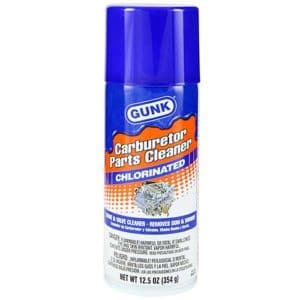
3 Signs That Your Carburetor is Dirty
Here are all the signs that show that your snow blower’s carburetor is dirty and requires cleaning:
1. Poor Idling
If your carburetor is idling rough or idling too fast, this is a sign that it needs cleaning immediately.
2. Uneven Acceleration
When your carburetor is clean and tidy, it must accelerate without stumbling. So, uneven acceleration is another sign that your carburetor is dirty.
3. Flooding
Flooding is the result when too much fuel gets into the cylinders. A carburetor can have debris in its needle valve causing a spillage. So, you must clean the carburetor of your snowblower whenever you notice any of these signs.
Frequently Asked Questions
Where do you spray carburetor cleaners?
Position the tip of the aerosol container into the center of the carburetor and spray it directly into the running carburetor. It’s important to do it while the carburetor is running. It allows the cleaner to penetrate deep inside and clean all the parts of the carburetor.
Why does my snowblower start and then stop?
A blocked carburetor is the most common cause of this problem. It is caused by leaving fuel in the snowblower for a long period of time. It stops the fuel from the carburetor, causing the engine to misbehave.
What is the function of a snowblower carburetor?
Its function is to control the air and fuel mixture in the engine. This is very important and if the engine doesn’t start, then the carburetor can be the problem.
What are the parts of the snowblower carburetor?
The basic parts of a snow blower carburetor are the float chamber, strainer, metering system, throttle valve, and choke valve. For the efficient working of the carburetor, all these parts must be properly cleaned.
Can you clean a snowblower carburetor without removing it?
Yes, you can clean a snowblower carburetor without removing it.
Summing-up
So, for the efficient and proper working of a snowblower, it is necessary to consistently clean its carburetor. This will not only enhance the performance of your machine but also increase the life of a snowblower. Hopefully, after reading this article on how to clean a snowblower carburetor? It will be much easier for you to find the best snow blower carburetor cleaner for your own machine.
There are hundreds of different types of cleaning products available in the market for carburetor cleaning. But here, we have suggested the best of the best for you. These cleaners will clean your snowblower carburetor in minutes, increasing its lifetime.
References:
- “How to Clean a Snowblower Carburetor Without Removing It” by The Spruce: This article provides a detailed guide on how to clean a snowblower carburetor without removing it, including step-by-step instructions and helpful tips. (https://www.thespruce.com/how-to-clean-a-snow-blower-carburetor-1388140)
- “How to Clean a Snow Blower Carburetor” by Briggs & Stratton: This video tutorial provides a visual demonstration of how to clean a snow blower carburetor and includes tips on how to maintain the carburetor for optimal performance. (https://www.youtube.com/watch?v=5kS6O9spLLk)
- “How to Maintain a Snow Blower” by Consumer Reports: This article provides tips on how to maintain a snow blower, including how to clean the carburetor, change the oil, and replace the spark plug. (https://www.consumerreports.org/snow-blowers/how-to-maintain-a-snow-blower/)
- “How to Clean a Snow Blower Carburetor: A Complete Guide” by Handyman’s World: This comprehensive guide provides step-by-step instructions on how to clean a snow blower carburetor, as well as tips on how to troubleshoot common issues and prevent future problems. (https://handymansworld.net/how-to-clean-a-snow-blower-carburetor/)
- “Snow Blower Maintenance Checklist” by Toro: This checklist provides a list of maintenance tasks to perform on a snow blower, including cleaning the carburetor, checking the oil, and inspecting the spark plug. (https://www.toro.com/en/parts/snow-blower-maintenance-checklist)

